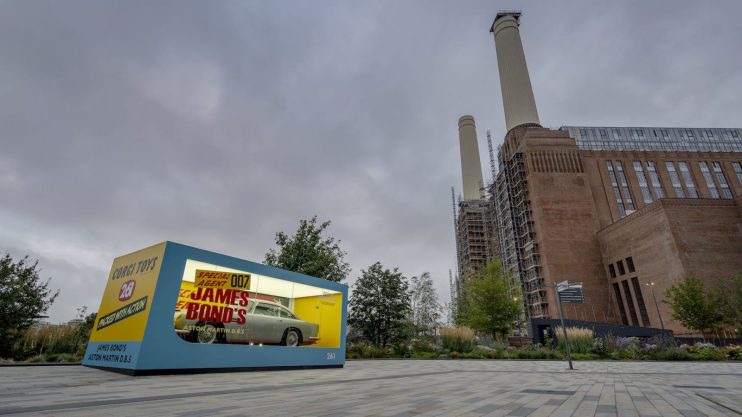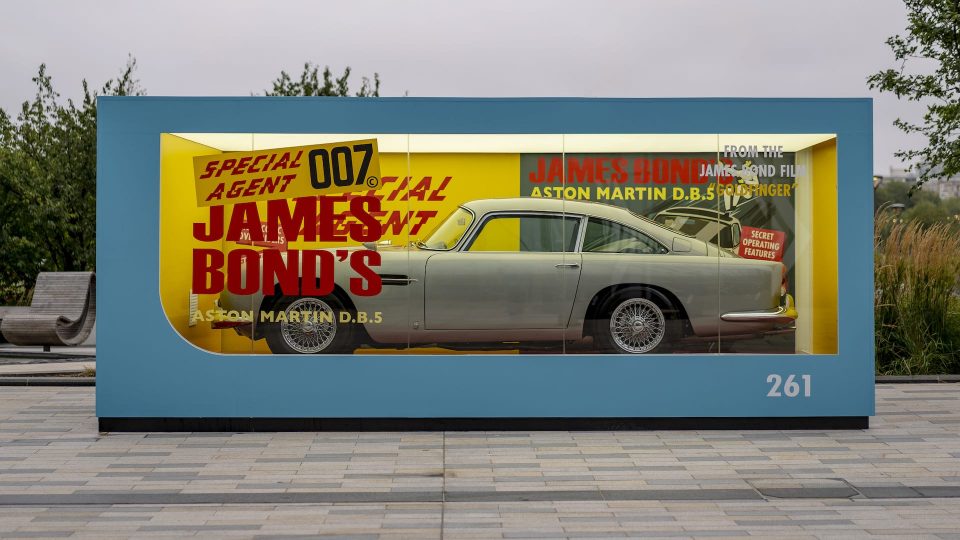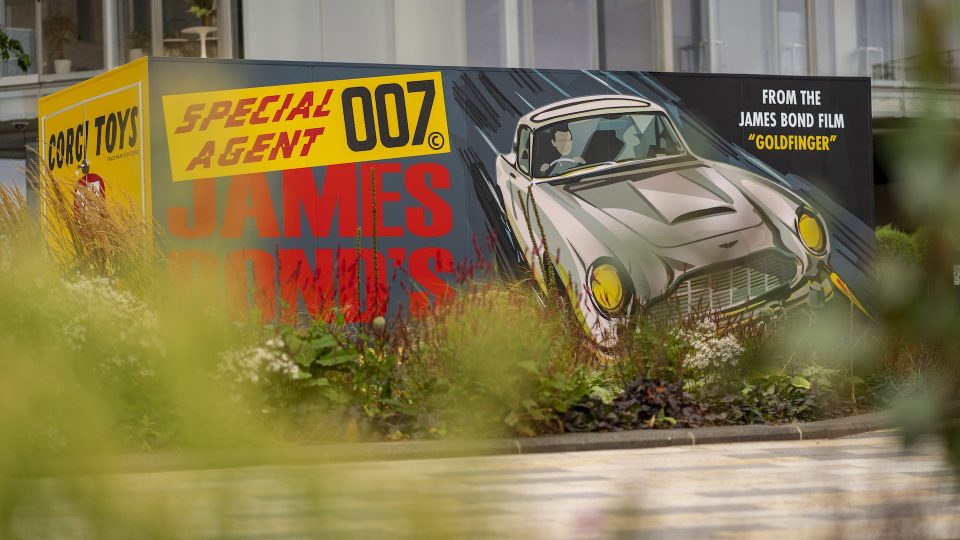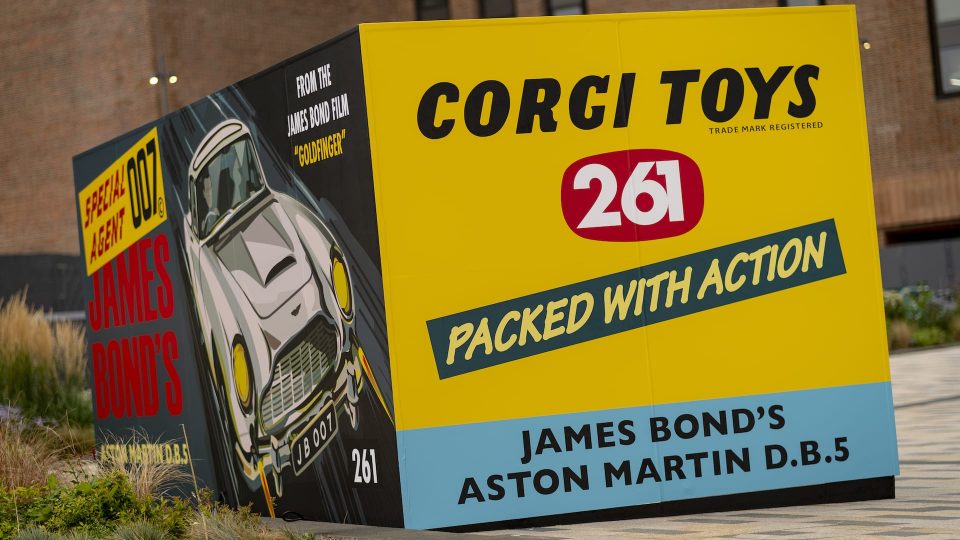Life-size Aston Martin ‘Goldfinger’ toy displayed at Battersea Power Station

With the latest James Bond film due for release in September, Aston Martin has started its PR push early. No Time To Die is the 25th film in the long-running series, and British sports cars play a major role once again.
Four Aston Martins will star on-screen. They include a classic DB5, as first driven by Sean Connery in Goldfinger, plus the latest Valhalla supercar.
At a preview for the No Time To Die TV campaign, Aston Martin unveiled a giant replica of the original 1965 Corgi DB5 model.

Located outside Battersea Power Station, the life-size Corgi toy box contains a new DB5 Goldfinger. The £2.75 million Continuation car features classic 007 gadgets such as rotating number plates, a retractable bullet-proof shield and mock machine guns.
It is housed in a replica Corgi box, which measures 5.7 metres long and 2.8 metres tall.
20 million toys sold
The Corgi DB5 became a best-selling toy when released. Its instant success included UK ‘Toy of the Year’ and ‘Best Boy’s Toy’ titles at the National Association of Toy Retailers Awards in 1965.

Such popularity means the model is still in production today, now with some 20 million sold worldwide.
Aston Martin tapped into enthusiasm for the Corgi original with the run of DB5 Continuation cars. Limited to 25 examples, the 007-spec modifications mean they are not road-legal without IVA modifications.
Unveiling the life-size Corgi replica was Marek Reichman, Aston Martin’s chief creative officer.
He commented: “We are really honoured to be marking the start of the No Time To Die campaign today with this exciting unveil. Aston Martin’s relationship with James Bond spans decades and the DB5 is, without question, the most famous car in the world by virtue of its 50-plus year association.

“Now, to work with Corgi – another quintessential British brand – and to see James Bond’s most cherished car sitting inside a to-scale toy box in central London is quite outstanding”.
The full-size Corgi DB5 toy will be on display at Battersea Power Station until 1 October 2021.
John Redfern writes for Motoring Research